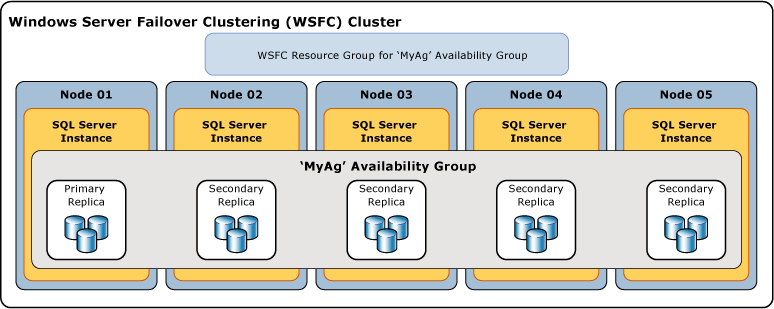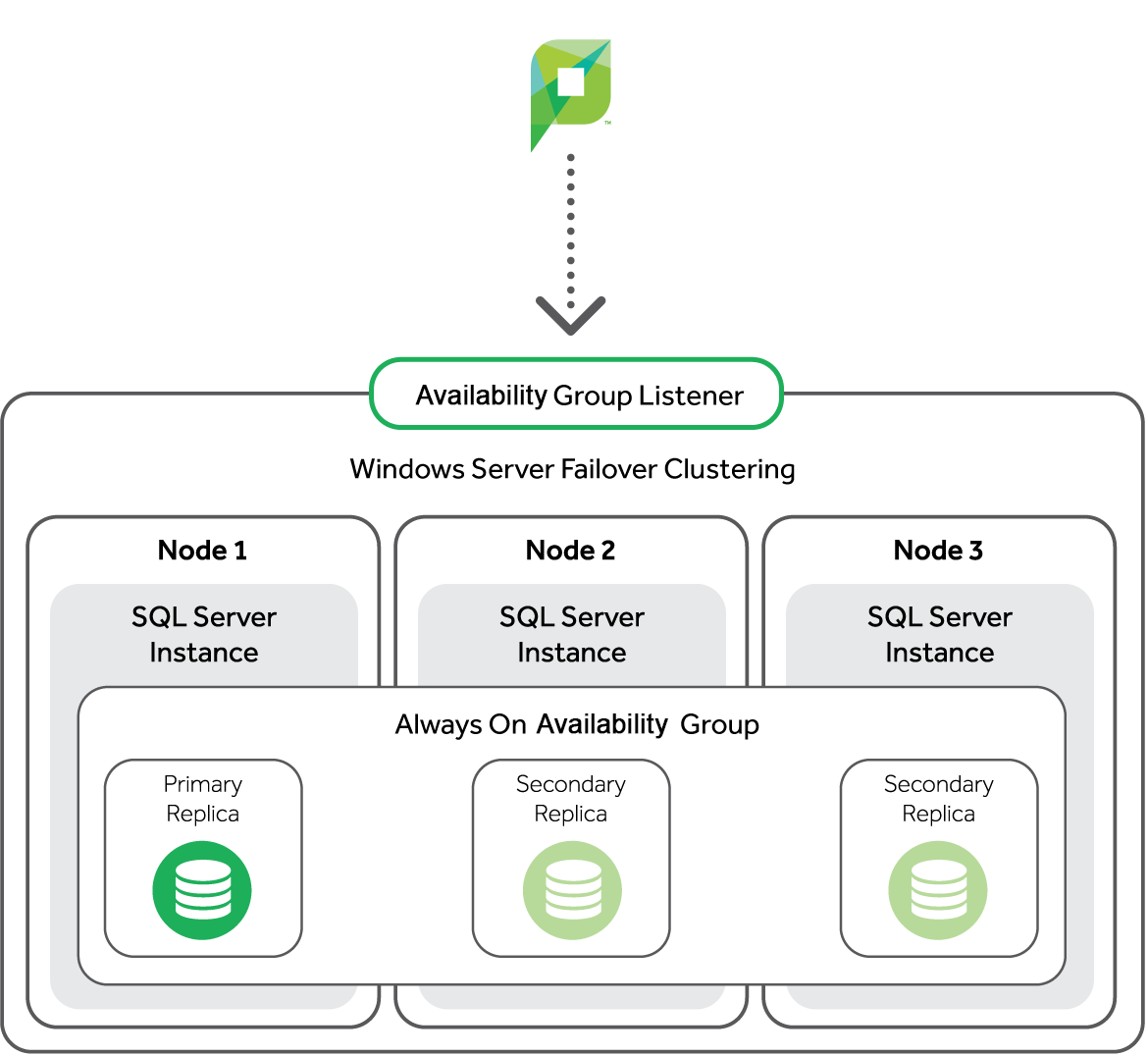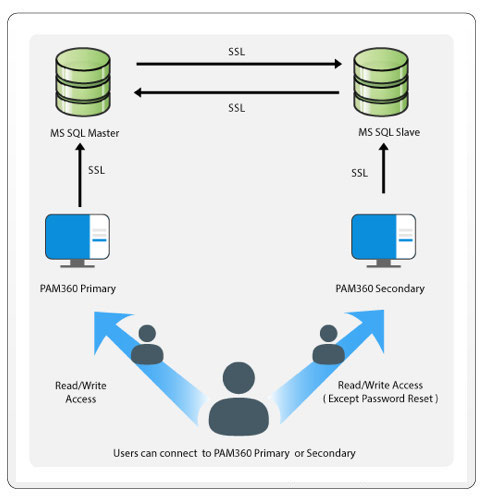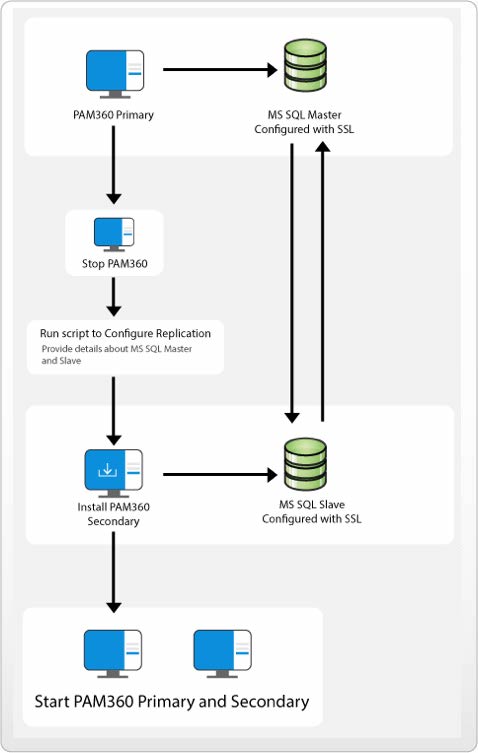In the fast-paced world of technology, ensuring that data remains accessible and secure is of paramount importance. That’s where SQL Server High Availability Scripts come into play. These powerful scripts are designed to enhance the availability of your SQL server, ensuring that it stays up and running even in the face of unexpected events or planned maintenance. Whether you’re a seasoned IT professional or just starting out, these scripts provide a reliable solution to keep your SQL server at its optimal performance level. In this article, we will explore the key features and benefits of SQL Server High Availability Scripts, putting you on the path to a more resilient and efficient database management system.
What is SQL Server High Availability?
SQL Server High Availability refers to a set of technologies and practices that ensure the availability and continuity of a SQL Server database in the event of a failure or outage. In simple terms, it is the ability of a SQL Server database to remain accessible and operational even when there are hardware or software failures.
Definition
High Availability in the context of SQL Server refers to the ability of a SQL Server database to provide a seamless and uninterrupted experience to its users, even in the face of failures or outages. It involves various technologies and strategies that enable automatic failover, replication, and redundancy to ensure that the database stays online and accessible.
Importance
SQL Server High Availability is crucial for organizations that rely heavily on their databases for critical business operations. Downtime or database unavailability can result in significant financial losses, damage to reputation, and loss of data. High Availability solutions mitigate these risks by minimizing downtime and ensuring continuous operations, thereby maximizing business efficiency and customer satisfaction.
Types of SQL Server High Availability
There are several types of SQL Server High Availability solutions available, each with its own strengths and suitability for different scenarios. Let’s explore some of the most commonly used ones:
1. Always On Availability Groups
Always On Availability Groups is a feature introduced in SQL Server 2012 that provides high availability and disaster recovery capabilities for multiple databases. It allows you to create groups of databases, referred to as Availability Groups, and provides automatic failover between replicas within the group. This solution provides both high availability and read scalability.
2. Failover Clustering
Failover Clustering is a Windows Server feature that enables the establishment of a group of servers, known as a cluster, that work together to provide high availability for applications and services. In the case of SQL Server, Failover Clustering ensures that if one server in the cluster fails, another server in the cluster can take over the workload and provide uninterrupted access to the database.
3. Database Mirroring
Database Mirroring is a SQL Server feature that provides high availability by maintaining an exact copy of a database, known as the mirrored database, on a separate server. Any changes made to the principal (active) database are automatically replicated to the mirrored database. In the event of a failure, the mirrored database can take over and become the active database, minimizing downtime.
4. Log Shipping
Log Shipping is a SQL Server feature that allows the automatic backup and restoration of transaction logs from a primary database to one or more secondary databases. The transaction logs are backed up and copied to the secondary server, where they are applied to maintain a synchronized copy of the primary database. In the event of a failure, the secondary database can be brought online to minimize downtime.

Setting Up High Availability
To set up High Availability for your SQL Server database, you need to follow a series of steps, including the installation and configuration of SQL Server and the appropriate High Availability solution. Let’s look at an overview of the steps involved:
1. Installing SQL Server
The first step in setting up High Availability is to install SQL Server on the servers that will be part of the High Availability solution. This involves selecting the appropriate edition of SQL Server based on your requirements and running the SQL Server installation wizard to complete the installation process.
2. Configuring Cluster for SQL Server
If you choose to use Failover Clustering as your High Availability solution, the next step is to configure the cluster. This involves setting up the Windows Server Failover Cluster, adding the SQL Server instance as a resource in the cluster, and configuring the necessary settings for failover and redundancy.
Monitoring and Managing High Availability
Once you have set up High Availability for your SQL Server database, it is essential to continuously monitor and manage the availability and performance of the system. Let’s look at some key aspects of monitoring and managing High Availability:
1. Monitoring Availability
Monitoring the availability of your High Availability solution involves regularly checking the status of the servers, replicas, and databases involved. This can be done using built-in SQL Server tools, such as SQL Server Management Studio (SSMS) or third-party monitoring tools. Monitoring can include checking the health of replicas, monitoring replication lag, and ensuring that automatic failover is functioning correctly.
2. Managing Failovers
In a High Availability setup, failovers may occur due to hardware or software failures, maintenance activities, or other reasons. It is essential to have a well-defined plan and procedures in place to handle failovers effectively. This includes understanding the order in which failovers occur, ensuring the necessary resources are available on standby servers, and coordinating the failover process to minimize downtime and impact on users.

Failover Scenarios and Scripts
Failover scenarios are situations where a failover is triggered to ensure the continued availability of the SQL Server database. Let’s explore two common failover scenarios and the relevant scripts:
1. Planned Failover
A planned failover is a deliberate failover performed during scheduled maintenance or upgrades. This allows you to proactively move the database workload from one server to another without any disruption to the users. Script examples for a planned failover could include stopping the SQL Server service on the primary replica, initiating a failover to the secondary replica, and verifying the successful failover.
2. Forced Failover
A forced failover occurs when an unexpected failure or outage renders the primary replica unavailable. In this scenario, you may need to manually force a failover to a secondary replica to ensure the continued availability of the database. Script examples for a forced failover could include identifying the primary replica, promoting a secondary replica to become the new primary, and updating the necessary configurations.
Script Examples for High Availability
Scripts can greatly simplify the process of managing and maintaining a High Availability solution for SQL Server. Here are some script examples that can be used in various scenarios:
1. Script for Creating Availability Group
To create an Availability Group using Always On Availability Groups, you can use PowerShell scripting to automate the process. The script would involve defining the necessary configuration settings, creating the Availability Group, and adding the required databases to the group.
2. Script for Monitoring Availability Group
To monitor the health and status of an Availability Group, you can use script examples that query the system views and dynamic management functions in SQL Server. These scripts can provide information on the synchronization status, failover readiness, and performance of the replicas and databases in the group.
3. Script for Adding and Removing Databases
When managing an Availability Group, you may need to add or remove databases from the group. Script examples can simplify this process by automating the tasks involved, such as detaching or attaching databases, modifying replica configurations, and ensuring proper synchronization.

Automating High Availability Scripts
Automation is a key aspect of managing High Availability in SQL Server, as it reduces manual effort, improves efficiency, and minimizes the risk of human errors. Let’s explore two methods of automating High Availability scripts:
1. Using PowerShell
PowerShell is a powerful scripting language that can be used to automate various administrative tasks in SQL Server. You can create PowerShell scripts that execute SQL commands and automate tasks such as creating Availability Groups, monitoring replicas, and performing failover operations. These scripts can be scheduled to run at specified intervals or triggered by specific events.
2. Scheduling Scripts with SQL Agent
SQL Server Agent is a built-in component of SQL Server that allows you to schedule and automate administrative tasks. You can create jobs in SQL Server Agent that execute your High Availability scripts, such as monitoring queries or failover procedures, at specified times or intervals. SQL Agent provides a centralized and reliable mechanism for scheduling and managing these automated tasks.
Testing and Verifying High Availability
Testing and verifying the effectiveness of your High Availability solution is crucial to ensure its reliability and readiness for handling failures. Let’s explore two important aspects of testing and verifying High Availability:
1. Performing Failover Testing
To ensure that your High Availability solution is functioning as expected, you should regularly conduct failover testing. This involves simulating failure scenarios, such as hardware failures or network outages, and verifying that the failover process works correctly. Failover testing allows you to identify any potential issues or bottlenecks and make necessary adjustments to improve the performance and reliability of your High Availability solution.
2. Checking Replication Status
If you are using replication-based High Availability solutions like Always On Availability Groups or Database Mirroring, it is essential to regularly check the replication status to ensure data consistency and synchronization. Monitoring replication lag, verifying the health of replicas, and checking for any synchronization errors are crucial steps in verifying the effectiveness of your High Availability solution.

Troubleshooting High Availability Issues
Despite careful planning and implementation, issues can arise in High Availability solutions. It is important to be prepared to troubleshoot and resolve any problems that may occur. Let’s explore two key aspects of troubleshooting High Availability issues:
1. Common Problems and Solutions
High Availability solutions can face various challenges and issues, such as connectivity failures, synchronization problems, or performance bottlenecks. It is important to familiarize yourself with common problems and their corresponding solutions. These can include adjusting network configurations, resolving replication conflicts, or optimizing system resources.
2. Analyzing Error Logs
SQL Server maintains detailed error logs that can provide valuable insights into the root cause of High Availability issues. Analyzing these error logs can help you identify the source of the problem, understand the sequence of events leading up to the failure, and take appropriate corrective actions. By carefully reviewing and interpreting the error logs, you can effectively troubleshoot and resolve High Availability issues.
Best Practices for SQL Server High Availability
To ensure the effectiveness and reliability of your SQL Server High Availability solution, it is important to follow best practices. Let’s explore some key best practices for SQL Server High Availability:
1. Regular Backups
Although High Availability solutions provide redundancy and failover capabilities, it is still important to perform regular database backups. Backups serve as an additional layer of protection and allow you to recover from catastrophic failures or data corruption. Implement a backup strategy that includes regular full backups, transaction log backups, and periodic integrity checks.
2. Performance Tuning
High Availability solutions can introduce additional overhead and impact database performance. It is important to regularly monitor and tune the performance of your High Availability setup. This may include optimizing network configurations, adjusting replication settings, or reviewing hardware resources. Regular performance tuning ensures that your High Availability solution is operating at its optimal level.
3. Disaster Recovery Planning
While High Availability solutions provide continuous availability, they may not protect against larger scale disasters such as site failures or natural disasters. It is important to have a comprehensive disaster recovery plan in place that includes offsite backups, geographically dispersed replicas, and procedures for recovering from catastrophic events. Regularly test and update your disaster recovery plan to ensure its effectiveness.
In conclusion, SQL Server High Availability is essential for organizations that rely on their databases for critical business operations. By implementing the appropriate High Availability solutions, following best practices, and regularly testing and monitoring the system, you can ensure the continuous availability and performance of your SQL Server database.

Leave a Reply